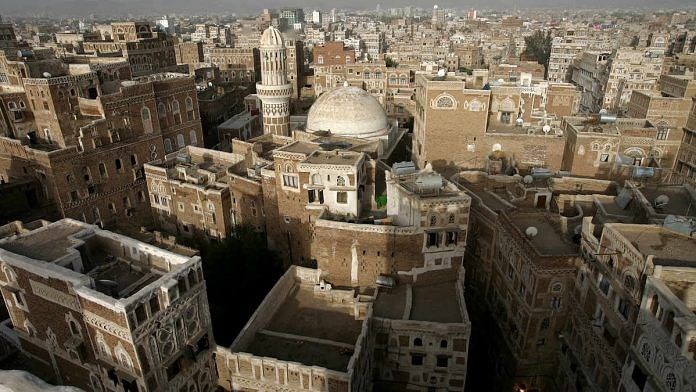New Delhi: Up to 40 people died in clashes between UAE-backed southern secessionist forces and Saudi-backed government forces in the port city of Aden in Yemen on Sunday. The UAE is a part of the Saudi-led coalition in Yemen and the clashes demonstrate growing divisions between the two allies.
The secessionists belonging to the Southern Transitional Council (STC) and the Security Belts, an STC-aligned militia, took control of the nearly-empty Presidential Palace and all government military camps in Aden, a spokesman for the Security Belts told AFP on Saturday.
Aden is the temporary home of Yemeni President Hadi’s internationally-recognised government, although Hadi himself is in Saudi Arabia. Houthi rebels took control of Sana’a, Yemen’s capital and the previous seat of the government, in 2014.
While the separatist and government forces have a united goal of defeating the Houthi rebels, they want different political outcomes for the country’s future.
Saudi and UAE have diverging interests
The UAE entered the Yemen conflict as part of the Saudi-led coalition against the Houthi rebels, but have withdrawn several thousand troops from the conflict in order to focus on the political process of negotiating with the Houthis and ending the war.
The Houthis and the internationally-recognised Yemen government held talks last month about implementing a ceasefire in the port city of Hodeida, which is currently held by Houthi rebels and is the main point of entry for humanitarian aid.
UAE previously had troops surrounding Hodeida to pressure the Houthis to implement the terms of a UN-brokered ceasefire in the city. UAE Minister of State for Foreign Affairs Anwar Gargash urged the rebels to see this as a “confidence-building measure” signalling their commitment to the peace process.
For Saudi Arabia, the priority has always been to dislodge Houthi rebels from Sana’a and reinstate Hadi’s government, but years of airstrikes and clashes have been unable to achieve this.
Also read: Royal row between Dubai’s ruler and his sixth wife with an Indian twist
How did the conflict start?
The civil war that has devastated Yemen since 2015 is the latest conflict in a long history of clashes between the north and the south.
A Shia Islam sect known as the Zaidis has controlled the north for over 1000 years. After the fall of the Ottoman Empire, the north became the Yemen Arab Republic (YAR) in 1962 and was ruled by a Shia imam.
The south became the People’s Democratic Republic of Yemen (PDRY) in 1967 after British colonial rule ended, but was still marred by infighting. The south became a Marxist republic in 1969 and fought wars with the north in 1972 and 1979. It was only in 1986 when the Soviet Union had begun to disintegrate, that the north and south were pushed closer together.
The two states unified in 1990. Elections were held in 1993, but old sectarian lines were exposed and civil war broke out. In 1994 the southern rebellion was crushed by then-president Saleh, which led to prosperity in the north and decline in the south.
In 2011, protests erupted during the Arab Spring against unemployment, poor economic conditions and corruption. Protesters demanded Saleh’s resignation, and he was forced to hand over power to current President Hadi in 2011. Hadi, however, was unable to improve conditions for Yemenis.
In 2014, Houthi rebels took control of large swathes of the country, including Sana’a. The Houthis belong to a Shia Muslim sect that was widely believed to be backed militarily by Iran, a Shia-majority country.
Since March 2015, a Saudi-led coalition has been fighting the rebels with the goal of restoring President Hadi’s internationally-recognised government. The conflict has become a proxy war between Iran and the Sunni-majority Saudi Arabia and UAE.
Airstrikes by Saudi Arabia and ground fighting have left tens of thousands dead and left 240 lakh civilians – around 80 per cent of Yemen’s population – in need of humanitarian assistance.
The UN has called the situation in Yemen the worst humanitarian crisis in the world.
Also read: Most countries don’t know how much they owe China — and it’s a lot



